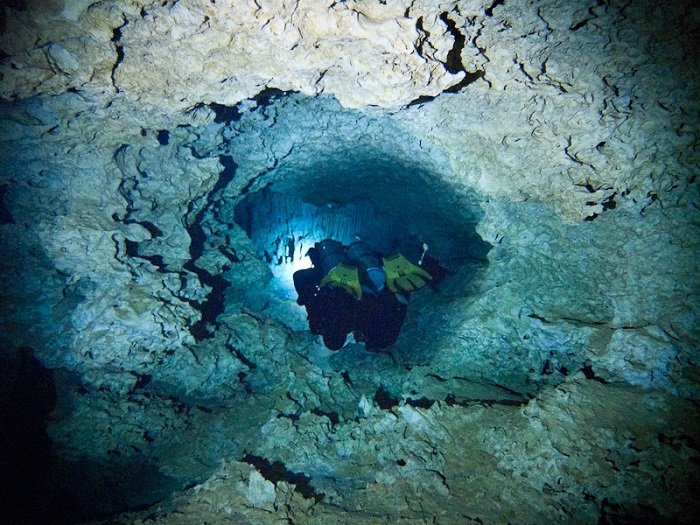In the work of cutting trees in Germany, Robert Schmittner had rarely thought that one day he would discover the world's largest underwater cave in Mexico. Two decades later, Robert, who became a diver, is the head of underwater research in an academic project on Mexico's Yucatan Peninsula, and the entire science world has been excited over his discovery of the world's longest underwater cave. Sac Actun and Dos Ojos Caves are located near the tourist resort of Tulum, in Quintana Roo state. The Robert Schmittner did not know about the interconnection between these two caves, until he left a rope in Sac Actun cave to see where the flow of water take it. Before the day of January 9, the Robert Schmittner was working in this search for 14 years. 43-year-old Robert says that since the 1980's it was known that two caves are there, many explorers used to go there for searching the link between these two caves, but no one could detect it. He said that It was not easy because I had to dive more than 6 hours in an attempt to find out the connection. The next day, on 10 January, when he went to dive in Dos Ojos, he found a rope there, which was left in Sac Actun Cave by him on the previous day. It proves that both these caves are connected to the 347-km long underwater route under the earth. He said, after seeing the rope, my first reaction was - No, and I immediately closed my eyes, breathing deeply and said to myself: Is this true? As soon as I opened my eyes, I saw that it was really a rope and I yelled - yes ... yes ... yes ... it is true.
Guillermo de Anda from Mexico's National Institute of Anthropology and History says that the discovery by Robert Schmittner has given other researchers to move ahead because the search is continuing and it is certain that there will be more to know about these caves. De Anda consider Sac Actun as the world's most important underwater archaeological site. It is part of the Yucatan caves that were originally dry, but flooded when the sea level rose in late Pleistocene Ice Age. The nearly 200 objects found in the caves so far date from a period stretching from the Pleistocene 15,000 years ago to the Mayans. The existence of the Maya civilization in this area was from 2000 to 700 years ago. These objects include the remnants of prehistoric animals such as sabre-toothed tigers, sloths and mammoths and bones of humans who lived before 10000 years ago and pottery used in ancient times. In the trap of these caves, a skeleton called "Naia" is also important, which is the oldest and most complete skeleton found in Americas. The skeleton found in 2007 is of a teenage girl who lived here around 13,000 years ago. Because the Sac Actun cave has been proved to be connected to Dos Ojos cave, hence more new caves can be searched in the area. It is believed that these caves could stretch out over a length of at least 1,000 kilometres in underwater passages.















0 comments:
Post a Comment